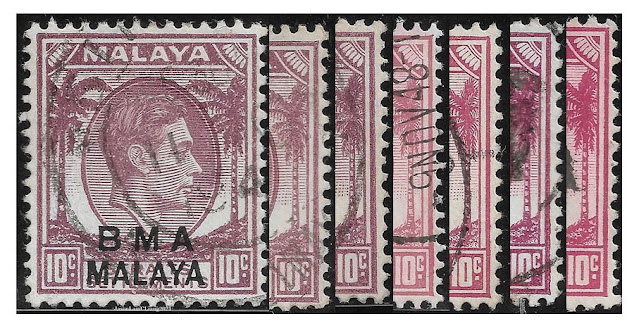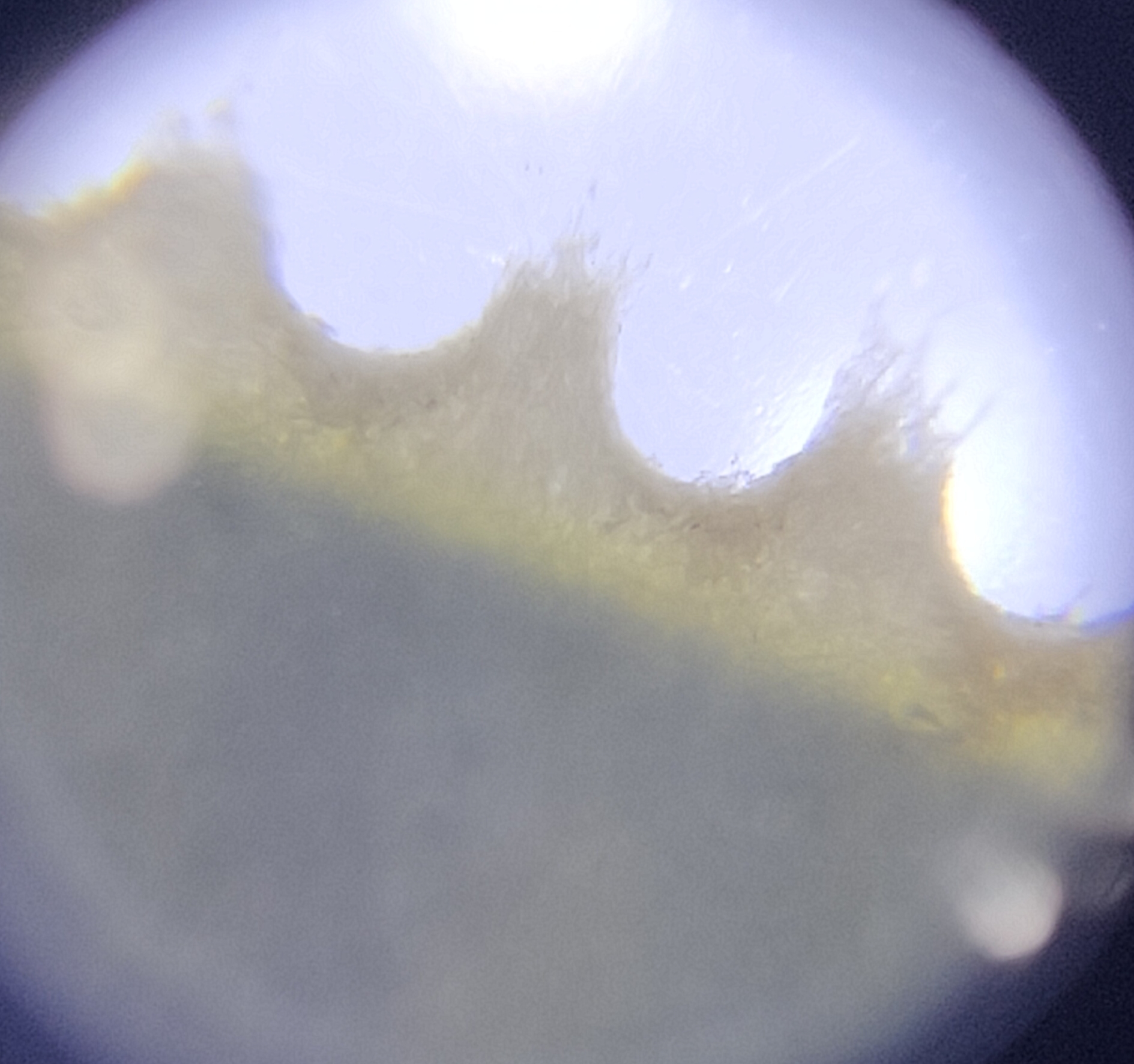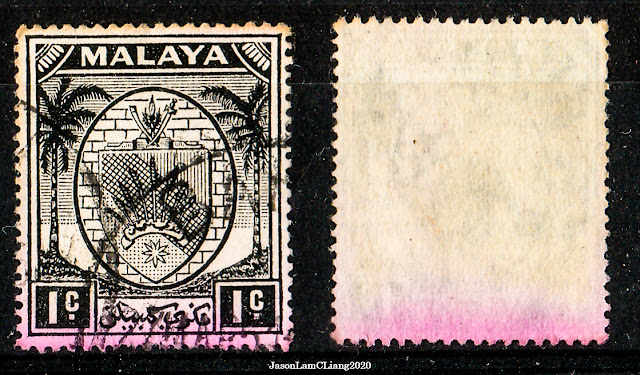In this time's write up, inspired by Lin Yang Chen (a great deal of help in understanding paper types) and the efforts by KGVI Stamps, would be shades of the 10c KGVI definitives overprinted BMA.
Without a specialized SG catalogue, the identification of these shades are laboriously done via one-to-one comparison in a large batch of ISC8. ISC only lists four shades of the 10c: ISC8 (all with Die I prints) deep purple, 8a slate-purple, 8b magenta, and ISC9 purple in Die II. In reference to KGVI Stamps, which had included catalogue numbers from Murray Payne's Commonwealth KGVI postage stamp catalogue (CW), I believe that certain shades (intended or not intended as listed on ISC) might be the same as CW's. With only a simplified Scott at hand, it did mention that the 10c (Sc#262, listed as dull violet) exists in at least three shades.
Subtle differences has always been a personal favourite attributed to the challenge of distinguishing it. And collecting the shades of the 10c BMA sits high. Here are some of the 10c shades that I manage to differentiate and scan. There is more but I guess that has to wait for next time.
 |
| Deep Purple (Die I) on Substitute Paper |
 |
Purple (Die I) on Substitute Paper; supposedly with fugitive ink
|
It was mentioned that for Purple (Die I) on substitute paper, fugitive ink was used. While the stamp that I have currently identified as the most 'purple' of all the shades, this current piece does not really show the characteristics of fugitive ink especially on a washed piece. Hence, I am only keeping this as purple for time being until I find one that fits the description.
 |
| Dull Purple (Die I) on Thin Striated Paper |
 |
| Purple and Dull Purple Bicolor (Die I) on Chalk Paper |
What makes the 10c BMA interesting is the fact that bicolors exist. As listed as CW24c, the 10c bicolor was printed on chalk paper. However, I found one that might be printed on substitute paper.
 |
A Purple and Dull Purple bicolor (Die I) on Substitute Paper
|
While being on bicolors, there were two more which had a slight difference in shade between the duty plate and KGVI's bust in the medallion. They were placed aside in my album with just a rough label.
 |
| On substitute paper. Note that the stamp on the right is slightly darker than the one on the left. |
The brighter side of the 10c BMA are the magenta-purple and reddish-purple ones, which I think is easier to tell apart, however, one should take into consideration that colors might seemingly look like magenta-purple but are washed fugitive purple instead. Hence, determining paper type might ease the confusion.
 |
| Magenta-Purple (Die I) on Chalk Paper; let this be Magenta-Purple No.1 for easy reference in this article. |
 |
Magenta-Purple (Die I) on Chalk Paper; let this be Magenta-Purple No.2
This, however, has a lighter shade than No.1 - perhaps on the pink side. |
 |
To visualize what I meant, I have placed No.2 in between two No.1.
No. 2 has a lighter shade than No.1.
|
 |
Magenta Purple (Die I) on Chalk Paper; let this be Magenta-Purple No.3
This has a similar shade to No.2 but in comparison, No.2 looks more rosy.
|
 |
| Comparison of No. 2 (left) and No. 3 (right). |
 |
Five 10c Magenta-Purple (Die I) on Chalk Paper. No 1, 2 ,3 are located on the right in that order.
|
 |
10c Magenta-Purple (Die I) on Chalk Paper that was printed quite thickly. Similar shade to No. 3.
I have yet to find one that is printed excessively thick. Perhaps by then I will also focus on subtle differences on ink thickness. |
CW24f states that the 10c Reddish-Purple (Die I) uses fluorescent aniline ink that shows some extent of fluorescence under UV light. I could not capture the image because my camera resets the illumination of fluorescent light into normal white light. Upon several attempts, I quickly find that my current setup of capturing images of stamps under UV light is futile.
On a side note, I wonder if putting these stamps under a UV transilluminator works. Perhaps a quick look while waiting for DNA's to migrate via gel electrophoresis? Don't tell my supervisors.
 |
| 10c Reddish-Purple (Die I) on Chalk Paper. |
 |
| Another 10c Reddish-Purple (Die I) on Chalk Paper, this time with signs of ink washed off. |
 |
| Lastly, a 10c Reddish-Purple (Die I) on Chalk Paper with very obvious signs of the aniline ink doing its ever invasive job staining parts of the stamp. |
Well, that is it for today's update. I have been working on this for quite some time and pushing it backwards for other articles to be posted simply because I required triple-checks whether I have gotten the shades correctly. Notwithstanding that they were examined over and over again, there might be mistakes. Until I find a better batch of stamps and a revised source of reference, I think this, as means of satisfying my obsession towards subtle shades will do.
In the beginning of the article I mentioned that shades do exist whether intended or not intended. What I was trying to point out is the fact that discoloration over time, brightening of colors as a result of being 'infected' with fugitive aniline, and fading of stamps from excessive sun tanning can also contribute to the unintended rise of the shades. This possibility, though questions the reliability towards deciding a shade of the 10c, can ultimately be lowered from careful examination.
How do we know if a dull purple was actually due to, say, ink-dilution of post-war printing, and not the result of the stamp being forced to take in Vitamin D via sunbathing? We might have to examine the uniformity of the shade.
A very helpful perception whenever sorting through shades be it listed or unlisted, common or uncommon: Every stamp is the cheapest/most common shade unless proven not. It all comes down to a back-breaking look under the microscope/magnifying glass.
Thanks for dropping by.




















Comments
Post a Comment